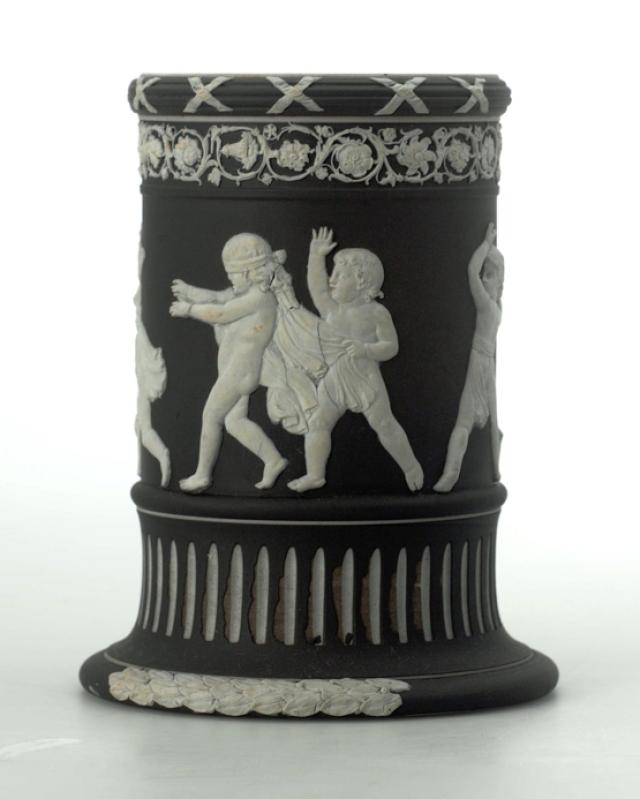Wedgwood and Artists: ‘Blind Man’s Buff’ Lamp Case
This cylindrical jasper base is listed in the records of the factory as a ‘lamp case – eight inches’, a simple description for such a decorative piece. The case is for an Argand lamp – a type of oil lamp invented in 1780 with an output of up to ten times brighter than candles. Using jasper would potentially allow some of the light to shine through. The case is made of white jasper with a black jasper ‘dip’ on the outer surface, it has then been ornamented with a continuous bas-relief of the subject ‘Blind Man’s Buff.’
In Wedgwood’s Ornamental Ware catalogues of the 18th century, a variety of lamps and candelabra apparatus are mentioned – though lamp cases are not specifically mentioned. The Etruria factory produced a range of lighting equipment including small ‘lamps after the antique’ in jasper, rosso antico and black basalt, as well as oil lamps of tripod form and even cassolettes.
The ‘Blind Man’s Buff’ bas-relief design was originally modelled for Wedgwood by John Flaxman junior in 1782, in response to Josiah’s request for ‘…some groups of children, proper for bas relief to decorate the sides of Tea pots’. Flaxman initially sent four drawings to Wedgwood: ‘Blind Man’s Buff’, ‘A Game of Marbles’ and two featuring the ‘Triumph of Cupid’, only ‘Blind Man’s Buff’ went on to be produced.
The lamp case cylinder does not have a base, but another pair in the V&A (http://collections.vam.ac.uk/item/O148627/pair-of-pedestals-josiah-wedgwood-and/) shows that a solid white jasper base, with moulded Chinese fretwork embossment, was probably part of the original design.
